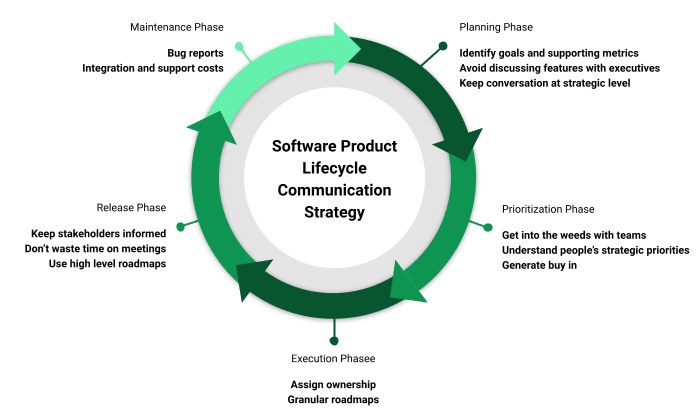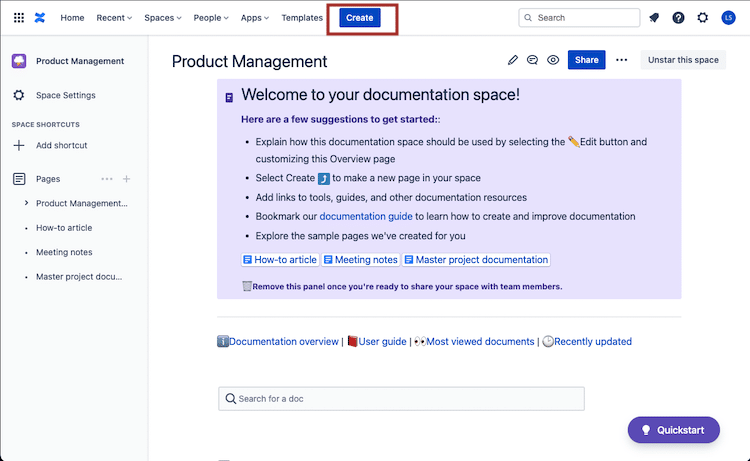Think you know how to use your product roadmap as a communication tool? Awesome, so then you wont mind me asking you a few questions then…..
- Do you find yourself struggling to keep product roadmap priorities straight?
- Have you been effective at warding off attempts by over reaching executives to get you to focus on their pet projects?
- Are you laying awake at night wondering how you are going to have difficult conversations with people who hold your career in their hands?
If you answered yes to any of the above, you might need a refresher course on how to use your product roadmap as a communication tool, but don’t worry The Product Manager’s Toolbox has ya covered. So let’s dive in shall we?
Use Your Product Roadmap As A Communication Tool
If you aren't jaded, you aren't experienced.
Stakeholders who are unfamiliar with the product development and management process lack the experience to know that you can’t reprioritize and change plans too often, as the result will be a product that lacks goals and objectives.
The who, when and what of your communication plan is important to keep both the product vision and your career moving forward. But be warned herding cats is not easy and a skilled product manager knows the communication strategy must be adapted over time if you want to keep your stakeholders bought in.

Understanding the who, what, where when and how of how to use your product roadmap as a communication tool is part of the dark arts of product management.
So, if you keep quiet and pay attention, we are going to give you a peak behind the curtain and give you the low down on:
- Communicating with stakeholders at each stage of the product lifecycle,
- Securing stakeholder buy-in on your roadmaps, and
- Avoid common communication pitfalls.
Now, don’t just sit there looking stupid, keep scrolling down….
How To Communicate With Stakeholders Throughout The Product Lifecycle
To everything turn, turn, turn There is a season turn, turn, turn
Strategies for Getting Stakeholder Buy-in on Your Roadmap
As previously discussed, experienced product managers present different elements of the product roadmap to different audiences. having said that, your communications must be clear, concise and persuasive, leaving stakeholders in agreement with your priorities. Key elements of this exerciese in stage management and employee entertainment include:
Weave a Yarn: Tell a Compelling Story

Pay it forward to your colleagues who are giving you their time, and attending your meeting. Do not bore them to sleep as you are simply wasting everyone’s time.
I’ll give you a pass this time, but you should know what good preparation for presenting a roadmap look like?
Documents alone do not a presentation make; Prepare to sell your story and justify why every initiative on the roadmap deserves to occupy space.
- Presentation Structure: Much like how you go about building a roadmap in the first place, good product manager roadmap presentations begin with the big picture and then narrows down into the specifics. Start with the “why” — share your strategic goals — before jumping into a more detailed explanation of the ”how” and the “what.”
- ELI5: Live and die by the term ELI5.
- If you can’t communicate your roadmap concisely, you don’t have a clear enough product strategy .
- Takeaways must be obvious.
- Do not overload presentation slides
- Keep verbal communication clear and direct.
- Objection Handling: The professional term “product manager” is a misnomer, it should be Internal Salesperson. Like a top performing salesperson, you need to handle objections in such away that those expressing concerns leave their interactions with you feeling that the product roadmap priorities were their ideas to begin with
-
- You will constantly doing the product finance dance (technically, is a bit of a samba) and data Aikido skills to parry away concerns about why some initiatives are being pursued over others.
- Provide specific examples: Make reference to specific themes while painting your vision. Describe how theme benefit customers and haul out data to frame the image.
If I fall asleep in a meeting, i blame it on whoever called the meeting for being unable to keep my attention.
Know Your Enemy Audience
Enemy, adversary, colleague, frenemy, audience….All one-in-the same? Right?
Understanding who you are talking with is the cornerstone of any success communication effort, . Presenting strategic goals to executives is a different beast compared to presenting specific plans to developers.
Know thy enemy and know yourself; in a hundred battles, you will never be defeated. When you are ignorant of the enemy but know yourself, your chances of winning or losing are equal. If ignorant both of your enemy and of yourself, you are sure to be defeated in every battle.
- Modify the level of detail: Quick rule of thumb, the higher the average annual compensation in the room, the less detailed the conversation (If you care about your career, you need to read The Ten Commandments Of Product Management). In executive targeting roadmaps, focus on high-level themes and strategic goals. Your discussion should be around the market space, customer data, and potential return on investment for new projects.
- You will know you have the tone of this roadmap correct if you show it to a product manager or developer and they start peppering you with practicalities
- At lower levels of the organization, the roadmap transition from theoretical to actionable. Engineering roadmaps, for example, need to communicate specific tasks, requirements and deadlines.
- Use appropriate language: Again, the average salary rule applies to the language used on your roadmaps. If your audience is
ignorant of even the basics of what a functional person working at a tech company should knownon-technical, use layman’s terms and- Avoid jargon or buzzwords.
- Do not use acronyms or abbreviations that are not commonly known outside your industry.
- Communicate Status and Features: Remember how I said executives don’t want to know details about products, well I may have shaded the truth a bit. The reality is more like:
- Executives think they want to know about details like features, technology and delivery dates.
- You, as the product manager, want them to think they are adequately concerned about and involved with product development, but really you want to keep them out of your sandbox.
How do you solve this mind bending paradox you ask? By knowing how to use your product roadmap as a communication tool…(My answer should not have surprised you, its literally the title of this article).
A skilled product manager knows how to use the product roadmap to throw executives a feature bone once in a while.
Keep in mind that your corporate overlords executive team thinks they want to know:
-
- The status of the over ambitious projects they signed off on.
- How you’re allocating your resources (Expect a lot of questions around resource allocation. Even though these project management related items rather than product management, most people don’t know the difference)
- How pear shaped things could get
- The release date of new features and how close you are to getting there.
The astute product manager uses the product roadmap meeting (which has a very strict agenda…always use an agenda) to preempt these discussion by addressing a few of them head on at the beginning of the meeting and then moving on to the next item on the agenda “for the sake of time”.
- Show more, say less: Show the “percent complete” for roadmap items. Assume all of your executives can read and let audience member raise points that are not problematic for you.
- Do not dive into the details, include the high-level completion status of each initiative on your roadmap.
- Filter initiatives by status by using a color-code system to convey information about the status of each initiative without cluttering your roadmap. Personally, I suggest you stick with standards like green for good, yellow for caution, red for emergency, but if your project is really going sideways, consider switching the meaning of the red and green codes. This may buy you some time 😉
- Know when to jump on the grenade: If something is really going bad, get out ahead of it and address that point head on. This allows you to control the narrative and limit anyone else to make political hay on your missteps. There are certain corporate types who build their career by stepping on people’s necks. Don’t be part of their body count.
- Look to the past: Reference older versions of the roadmap in case you need to defend why something isn’t going as planned. This allows you to shift the blame for all things beyond your control, you can easily track which initiatives have been completed, delayed, pushed back or canceled.
Use Visuals: Distract the Children with Pretty Pictures

Sometimes, I say the quiet part out loud…..
Only a small percentage of what people hear is retained, so leverage visual aids to your advantage, for either holding or distracting their attention as the situation dictates. Some items to remember when leveraging visuals:
- Use words sparingly: Remember, the more text you add to a slide, the less likely things are to be read, so depending what you want to get out of this meeting and choose your words accordingly.
- If you want your senior management to pay attention, avoid putting up wordy or complicated slides (Remember the “Average Salary Rule” from the product managers Ten Commandments.
- If you want to lull the team to sleep so you can bury some bad news, consider getting some inspiration from the worst power point presentations ever.
- Incorporate color schemes: Use color schemes to show how initiatives relate to one another and related strategic goals. Your color selection will be based on how badly you want people to remember the content. I’ll leave it to you to read between lines and figure out the rest (For god sakes, I’m not going to tell you how to rob the bank and do it for you too) .

Planning Phase Communication Strategy
It’s important to work closely with your executives to understand where you’re headed with your product strategy. At this point in the process your need to accomplish the following things:
- Develop a clear product vision
- Identify the strategic goals and supporting metric (revenue growth, customer acquisition, reducing churn) that are most important to your organization
- Agreeing on these items upfront ensure less confusion about product priorities later on.
- Agree on terminology
- Avoid discussing laundry lists of feature requests.
Treat feature discussions with executives like a colonoscopy.
How?
Executive like details about as they like a colonoscopy, so focus your energy on developing a high-level roadmap when attempting to sway executive opinion; using a well thought out series of important themes is the tactic to use here, so the conversation stays at the strategic level
Each theme on the roadmap must fit with your product vision, relate back to a strategic goal, supported by metric/data. They should avoid:
- Prioritizing discrete features
- Committing to specific deadlines
- Using a roadmap with dates
Prioritization Phase Communication Strategy
After aligning on strategic goals along with the supporting metrics and overarching themes, focus shifts to prioritizing specific initiatives within those product themes and requires you, as the product manager to transition from big picture thinking, to getting into the weeds with product management, engineering, sales, marketing, and customer support professionals. You need to get these stakeholders to buy into the product vision/strategy set by executive stakeholders.
How?
The politically astute method is to discuss the engineering, sales, marketing, and customer support teams’ priorities with them, then determine how those priorities fit with the organizations larger themes and strategic goals. This approach gets these teams to buy into the overall process and keep them onside with your vision and strategy.
Getting buy in to the product vision often requires handling difficult questions in regards to why certain projects/priorities are being pursued. Where as higher ups do not want to concern themselves with details, teammates involved in the prioritization process tend to respond much better to priorities and transparency.
As a product manager, when you are asked by stakeholders as to why particular projects are being pursued over others, remember to leverage data and do the product finance dance as needed
Execution Phase Communication Strategy

Having managed the integration of agreed upon priorities into a roadmap (Colloquially known as a pulling off the product manager “Triple Lindy“), next you need to break that roadmap into detailed actionable steps. This requires:
- Assign ownership/responsibilities of initiatives
- Allocate resources for each initiative
- Developing a production schedule with release dates.
At this point, communication strategies focus on making sure teams and individuals involved with the project:
- Knows what they are working on, and
- Understands how their projects contribute to the bigger picture.
Accomplish this by creating more granular roadmaps for technical audiences. Also, remember that during this phase depending on your company size, you may morph into a quasi project manager and you’ll start using project management tools as they are well suited to the details involved in this phase of the product lifecycle. Your developers will benefit from using project management tools, which communicate stories and tasks, in conjunction with product roadmaps, which communicate the strategic direction of the product.
Release Phase Communication Strategy

Now that your scheme product development has been set in motion, the product manager needs to keep pushing forward as the product heads toward release. This sing song portion of product lifecycle involves:
Schedule meetings with sales, marketing, customer support, etc. to explain what’s coming next.Keeping stakeholders in the loop but avoid unnecessary product management meetings.- As previously discussed, use high-level roadmaps that communicates product direction, and be sure to exclude specific dates when presenting to customer-facing teams.
- Understand the needs of individual stakeholders:
- Marketing team must understand the product in order to properly position the messaging in the market.
- Sales must know the product’s benefits and how it solve customers’ problems so they can explain its value.
Maintenance Phase Communication Strategy
The maintenance phase is the final step in the Product Life Cycle (well, kinda not really, unless the world comes to an end or you die, but I think you get what I mean because as computer systems and the needs of end users of computer programs continue to change, software usually follows a never-ending cycle of development) and occurs after the product is in full operation. It typically includes monitoring the performance of the software and involves
- Software upgrades, repairs, and fixes of the software if it breaks.
- Upgrades and integrations with new systems; often necessary to provide additional testing of the software or version upgrades.
- Identification of errors/defects, which require repairs during additional testing of the software.
- As software becomes cost-prohibitive to maintain and nears the end of the software life cycle, software designers begin the process of developing new software to replace the existing software.
- In many cases, the product development life cycles for programs may overlap. A software developer may begin the initial phase of the new software life cycle even before the release of the current version of software becomes commercially available.
The Quickest Routes To Product Roadmap Communication disasters
3 simple rules for fucking up your product roadmap communication strategy
Letting Sales Drive the Car
Making product decisions based on the latest sales prospect’s whims is a mug’s game. It will feel like work, but really its nothing more than spinning your tires in place. Prospects do not know your business goals, your product vision or its positioning in the market. Sales is a channel for potential product ideas, but it should never be the only conversation you have.

Just remember the Homermobile if you need to find out what will happen if you built everything customers requested, you end up with a directionless product. Additionally, each incremental feature dilutes your product’s core function, complicates positioning and adds to product debt.
Typical outcomes of sales driven roadmap:
- A skewed risk/return ratio: A requested feature is used by a small segment of customers, and the effort to build it outweighed the returns.
- Poor problem definition: Customers request features that don’t actually get to the root of their core problem as do not have the exact vocabulary to express the features they need because those features are not built yet. Problems can be solved in different ways; this is the value that you bring to the table as a product manager.
A sales driven roadmap is an abdication of your job responsibility because it’s up to you to get to the bottom of a customer’s problem, rather than just building exactly what they ask for.
Treating Engineering Like Mushrooms
Lots of companies treat engineering like mushrooms, keep them in the dark and throw shit at them. While in many situations, the engineering department have little in common with your customers, they should not being kept out of the loop on the strategic direction of the company.
Engineers often claim that they don’t understand why they are building something, and its not always because they are the polar opposite of your intended customer. There are certain stereotypical perceptions about software developers which are often used to isolate them as a group, but if you want novel solutions to problems, make sure you involve them
As a product manager, it’s your job is to make sure your developers are not managed like mushrooms.
Oversharing Details
Avoid oversharing roadmap details with other teams, unless of course you want to deal with situations like:
- Setting up false expectations or making promises to prospects that you cannot keep: Features often get pushed out or cancelled, resulting in frustrated third parties.
- Being seen as unreliable: If a customer gets the impression that your organization doesn’t deliver, your PR team will be doing some reputation repair work. Learn to shut your word hole and do not over commit. Only discuss features that are on their way to becoming reality, otherwise be vague.
Conclusion: How To Use Your Product Roadmap As A Communication Tool
The difference between experienced and inexperienced professional is the mastery of soft skills. Knowing how to use your product roadmap as a communication tool is just such a soft skill that will help you tame managers, lead team members and keep your career on an upwards trajectory. Just remember:
Everybody has a plan until they get punched in the mouth.







